In the competitive pre-workout market, most brands follow a predictable formula: include 1 to 2.5g of betaine, check the box, and move on. It's the minimum effective dose range shown in research, so why go higher? For most companies, the answer is simple: cost savings and profit margins... there's generally not much market incentive to go above 2.5g.
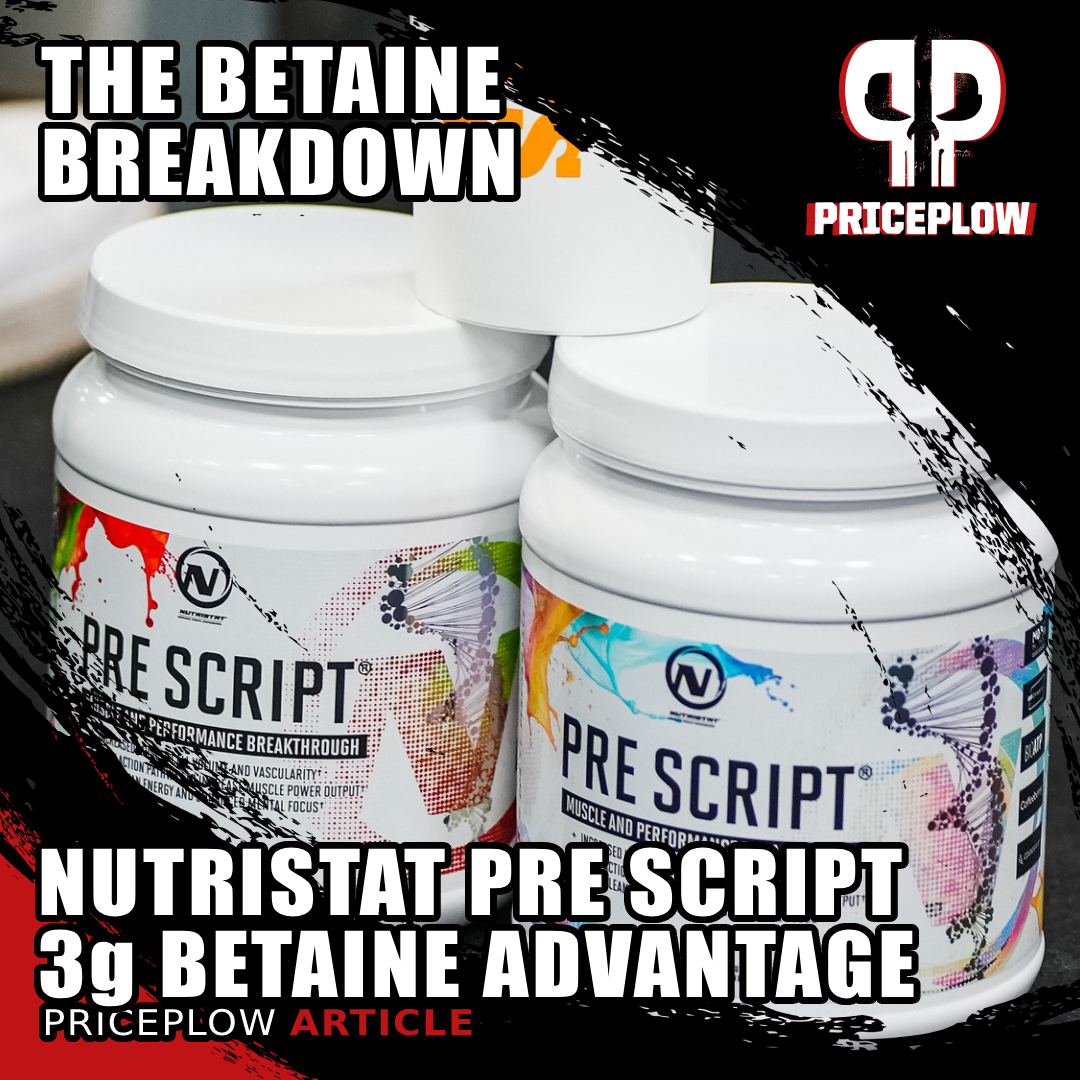
Most pre-workouts use 1-2.5g betaine to check the box. NutriStat Pre Script uses 3g because research shows dose-dependent benefits. Betaine enhances cellular hydration under stress AND supports creatine synthesis. When training hard, that extra 500mg matters.
Nutristat takes a different approach with Pre Script, including 3g of betaine in every serving. That extra 0.5-2g might seem trivial, but it reflects a brand philosophy we've seen throughout their product line: when research suggests more could be better, they don't settle for "good enough".
This commitment to clinical dosing isn't isolated to betaine. Pre Script delivers 6g of pure L-citrulline instead of lower-yield citrulline malate, 5g of premium Creapure® creatine monohydrate instead of generic alternatives, and pioneering ingredients like BioATP® triacetyladenosine that competitors haven't even heard of yet.
The Ultimate Betaine Guide, and Why NutriStat is Doing it Right
It's been quite a while since we've brushed up on betaine, so let's use this as an opportunity to knock down a ton of the research we've found over the years.
Before we explore why Pre Script's betaine dosing matters, make sure to check our prices and sign up for Nutristat news alerts:
Nutristat Pre-Script – Deals and Price Drop Alerts
Get Price Alerts
No spam, no scams.
Disclosure: PricePlow relies on pricing from stores with which we have a business relationship. We work hard to keep pricing current, but you may find a better offer.
Posts are sponsored in part by the retailers and/or brands listed on this page.
This area is reserved for Team PricePlow's upcoming Ingredients video.
Subscribe to our channel and sign up for notifications so you catch it when it goes live!
Pre Script: Built on Premium Ingredients and Clinical Doses
Pre Script isn't just another caffeine-and-pump formula, it's a total performance enhancement system that addresses multiple training pathways through strategically dosed ingredients.
The formula delivers:
- 6g L-Citrulline (pure, not diluted citrulline malate)
- 5g Creapure® Creatine Monohydrate (German-engineered, 99.99% pure)
- 3g Betaine (exceeding standard 1.5-2.5g dosing)
- 3g L-Tyrosine (cognitive support under training stress)
- 2.5g Nitrates (as leucine nitrate and beet root nitrate)
- 300mg Caffeine Anhydrous (balanced energy without overstimulation)
- 250mg BioATP® Triacetyladenosine (breakthrough adenosine delivery)
Each ingredient appears at doses shown to deliver real performance benefits, not token amounts included for label appeal. The betaine dosing exemplifies this philosophy: while competitors settle for the minimum, Nutristat pushes towards the range where research suggests enhanced benefits may occur, or clinically-studied benefits will happen faster.
This approach costs more. As discussed in Episode #173 of the PricePlow Podcast, premium Creapure creatine costs significantly more than generic alternatives. Pure L-citrulline costs more than citrulline malate. And yes, 3g of betaine costs that much more than 2.5g. But for athletes serious about results, these details matter.
Let's explore why Pre Script's betaine dosing represents another example of Nutristat refusing to compromise on ingredient quality and clinical effectiveness.
What Makes Betaine Special: The Dual-Mechanism Advantage
Unlike single-pathway ingredients that work through one mechanism, betaine -- also known as trimethylglycine -- operates through two distinct physiological pathways that make it one of the most versatile performance compounds available:[1]
- As an osmolyte, it regulates cellular hydration under metabolic stress.
- As a methyl donor, it drives critical biochemical reactions including creatine synthesis and protein metabolism.
This dual functionality means betaine doesn't just target one aspect of performance: it creates a more favorable environment for muscle contraction, protects proteins during intense training, supports energy metabolism, and enhances recovery. It's the overlooked workhorse that makes other ingredients work better while delivering its own substantial benefits.
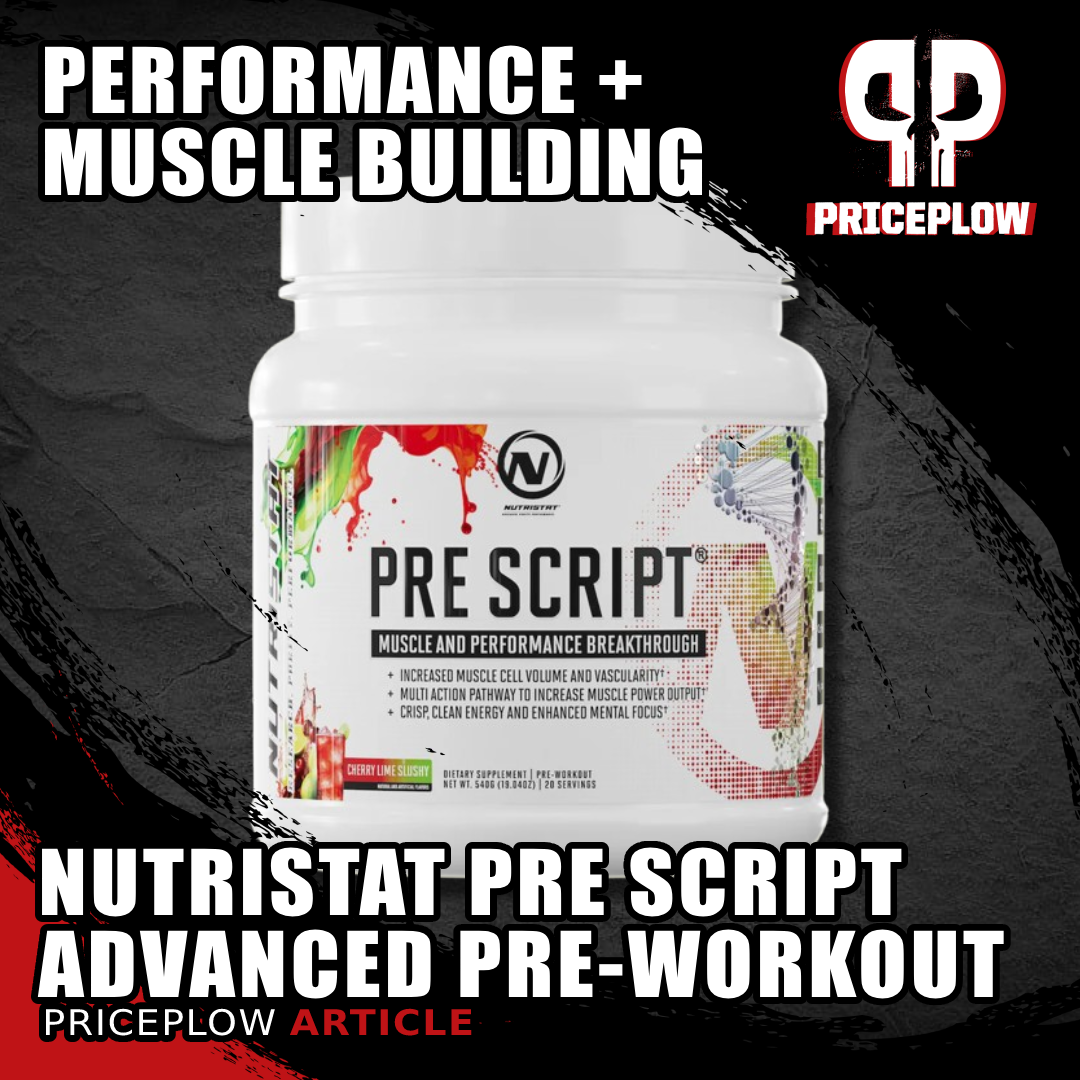
Nutristat Pre Script isn't your typical pre-workout. With 6g pure L-citrulline, 5g Creapure® creatine, and the first-ever inclusion of BioATP® (triacetyl adenosine), it's a complete performance enhancement system that builds muscle while boosting training intensity.
And in this case, more is better, which is why Nutristat included 3g of betaine in Pre Script. Let's explore these two mechanisms in detail:
-
Mechanism 1: The Osmolyte Effect - Cellular Hydration Under Stress
What Osmolytes Do
Think of osmolytes as your cells' personal bodyguards during training or experiencing heat distress. When you push through that final set or when metabolic stress peaks and cellular conditions become hostile, osmolytes step in to maintain order.
Betaine functions as an organic osmolyte, meaning it regulates cellular water balance without disrupting normal cellular processes.[2] Unlike electrolytes that may interfere with protein function, betaine achieves something remarkable: it increases water retention within cells while simultaneously stabilizing protein structure.[3]
Here's why this matters: during exercise, metabolic byproducts accumulate, creating an increasingly toxic environment for the molecular machinery driving muscle contraction. Proteins begin to unfold, enzymes lose efficiency, and cellular function degrades. Betaine counteracts this by forming a protective hydration layer around proteins, maintaining their native structure even under stress.[4]
The result? Your muscles can maintain force production and metabolic efficiency deeper into high-intensity sets.
Performance Implications
The osmolyte effect translates directly to performance through several interconnected mechanisms.
- First, betaine maintains excitation-contraction coupling during intense exercise.[3] This is the fundamental process by which electrical signals in motor neurons trigger muscle fiber contraction. When this coupling degrades under metabolic stress, force production drops and fatigue accelerates. By stabilizing the cellular environment, betaine helps preserve this critical link between neural drive and muscular force.
- Second, betaine protects critical enzymes against denaturation. Research shows it defends citrate synthase (a rate-limiting enzyme in the Krebs cycle) against thermal and chemical stress.[4] This means more efficient aerobic energy production between sets, supporting better recovery and sustained performance across multiple exercises.
- Third, betaine protects contractile proteins themselves. Studies demonstrate it shields myosin ATPase and myosin heavy-chain proteins against urea-induced denaturation.[4] These proteins generate the actual force during muscle contraction, so protecting them from degradation under metabolic stress means maintaining power output when it matters most -- during those final, growth-stimulating reps.
Why It Matters for Training
Exercise creates a perfect storm of osmotic stress. Metabolic byproducts accumulate. Ion gradients shift. Cellular pH drops. Temperature rises. This hostile environment challenges every aspect of cellular function, from energy production to force generation.
Betaine accumulates in tissues precisely when this stress peaks.[4] During periods of metabolic and ionic stress, skeletal muscle readily takes up betaine to maintain tissue-to-plasma concentration gradients that promote cellular hydration and stability. This isn't just theory, it actually translates to measurable performance outcomes (discussed below).
The placebo effect started strong with this group. But... the real gains obliterated placebo in due time with betaine![5]
Research demonstrates that betaine supplementation improves work capacity during high-volume resistance training. In experienced strength athletes following a periodized program, 2.5g daily betaine significantly increased bench press training volume compared to placebo, allowing subjects to complete more total work across multiple sets.[6] Similarly, 2.5g daily betaine reduced perceptions of fatigue during high-volume upper body exercise, enabling athletes to maintain effort when exhaustion would normally force termination.[7]
This enhanced work capacity stems from betaine creating a more hospitable environment for excitation-contraction coupling. When cellular conditions remain favorable despite accumulating metabolic stress, muscles can continue generating force, enzymes can maintain efficiency, and performance doesn't degrade as rapidly. You can push harder, sustain intensity longer, and accumulate more growth-stimulating volume... exactly what drives adaptation and results.
-
Mechanism 2: The Methyl Donor Pathway - Metabolic Optimization
-
The Homocysteine Connection
While betaine's osmolyte function protects cells during exercise, its methyl donor activity drives a cascade of metabolic reactions that influence everything from energy production to muscle growth.
The pathway centers on homocysteine, a sulfur-containing amino acid that accumulates as a metabolic byproduct. Elevated homocysteine isn't just a cardiovascular concern, it directly impairs athletic performance by inhibiting insulin signaling and protein synthesis.[6] Betaine attacks this problem by donating a methyl group to remethylate homocysteine back into methionine, effectively recycling what would otherwise be metabolic waste into a valuable resource.[4]
From the MEN's study: The arms don't lie! Here's one place where placebo doesn't rule: arm size! Betaine built bigger arms... in trained shttps://www.ncbi.nlm.nih.gov/pmc/articles/PMC3844502/]
This remethylation generates S-adenosylmethionine (SAM), the universal methyl donor used in hundreds of biochemical reactions throughout the body.[1] SAM drives creatine synthesis, carnitine production, protein methylation, and gene expression, essentially serving as the metabolic currency for performance-related processes.
By efficiently recycling homocysteine back into methionine, betaine preserves dietary methionine for its primary role: protein synthesis. Recall, methionine is an essential amino acid that we need to get in through diet. With betaine, we're not creating methionine from non-methionine precursors, we're regenerating it from homocysteine, thus preserving dietary methionine.
This all becomes crucial during training when muscle protein synthesis rates increase and methyl donor demand surges. Betaine supplementation has been shown to attenuate exercise-induced rises in homocysteine thiolactone (a toxic metabolite that inhibits the insulin receptor), maintaining more favorable conditions for muscle growth and recovery.[6]
-
Creatine Synthesis Enhancement
Here's where the methyl donor function gets interesting for pre-workout applications: betaine directly supports creatine production.
Endogenous creatine synthesis requires SAM to methylate guanidinoacetate, the creatine precursor formed in the kidneys.[1] By regenerating SAM through homocysteine remethylation, betaine may increase the methylation capacity needed for creatine biosynthesis.[4] Think of it as clearing metabolic bottlenecks that could otherwise limit creatine production.
Quality matters in creatine. Nutristat uses premium Creapure® in all their products, ensuring 99.9% purity without harmful impurities.
This mechanism suggests potential synergy with exogenous creatine supplementation, too, and as we've covered in the past, Nutristat leans heavily on Creapure, including it in Pre-Script. Exercise increases skeletal muscle creatine concentrations and enhances creatine uptake when combined with supplementation.[3] If betaine improves the metabolic environment for creatine synthesis and utilization, it could enhance the effectiveness of the 5g Creapure in Pre Script, supporting both endogenous production and exogenous uptake simultaneously.
The result? More creatine phosphate available for rapid ATP regeneration during those critical moments when you're grinding through heavy sets or explosive movements.
-
Hormonal and Anabolic Signaling
Betaine's influence extends beyond immediate energy metabolism into the hormonal and signaling pathways that drive adaptation.
Research demonstrates that two weeks of betaine supplementation (2.5g daily) increases plasma growth hormone and IGF-1 while decreasing exercise-induced cortisol.[8] This hormonal shift favors muscle protein synthesis and recovery. Growth hormone directly signals adipocyte lipolysis while IGF-1 activates anabolic pathways in muscle tissue,[4] which is exactly the environment you want post-training.
The mechanism likely involves betaine's effect on methyl group availability. By regenerating SAM, betaine may increase methylation capacity, improving IGF-1 receptor sensitivity and downstream activation of the Akt-mTOR pathway, the master regulator of muscle protein synthesis.[4]
Betaine supplementation also increases resting and post-exercise Akt phosphorylation while attenuating declines in p70 S6 kinase, key signaling proteins in the mTOR pathway.[8] Additionally, 14 days of betaine supplementation in adolescent male athletes significantly increased plasma testosterone and the testosterone-to-cortisol ratio after high-intensity resistance exercise.[3]
The cumulative effect: enhanced anabolic signaling that converts training stress into actual adaptation.
-
Fat Metabolism Effects
Betaine's methyl donor activity also influences body composition through multiple mechanisms affecting fat metabolism.
- First, betaine provides a methyl group for trimethyl-lysine synthesis, a precursor to none other than carnitine.[4] Carnitine facilitates fatty acid transport into mitochondria for oxidation, potentially increasing fat utilization during exercise. Animal studies show elevated muscle carnitine following betaine supplementation, suggesting this pathway operates in mammals.
- Second, betaine may reduce lipogenic enzyme activity. Studies in finishing pigs demonstrate that betaine supplementation significantly reduces acetyl-CoA carboxylase (ACC) and fatty acid synthase (FAS) activity -- the rate-limiting enzymes in fat synthesis.[4] While human data is limited, this mechanism could explain betaine's consistent body composition effects.
In experienced resistance-trained men, six weeks of 2.5g daily betaine significantly increased lean mass, reduced fat mass, and decreased body fat percentage compared to placebo.[6] Similar improvements occurred in untrained collegiate females following eight weeks of resistance training with betaine supplementation, with betaine-supplemented subjects showing greater reductions in body fat percentage and fat mass than placebo.[9]
These changes occurred without caloric restriction, suggesting betaine actively shifts nutrient partitioning toward muscle gain and fat loss when combined with training.
-
Synergy with Creatine: A Metabolic Marriage
The inclusion of 3g betaine alongside 5g Creapure creatine monohydrate in Pre Script isn't random, it's strategic biochemistry.
Both compounds work through methyl metabolism, but in complementary ways. Creatine synthesis consumes SAM, depleting the methyl pool that supports numerous other reactions. Betaine regenerates SAM through homocysteine remethylation, essentially refilling what creatine synthesis depletes.[1] This metabolic partnership means betaine supplementation may spare dietary methionine for protein synthesis while simultaneously supporting creatine production.
The osmolyte functions also complement each other. Both betaine and creatine promote cellular hydration, but through different mechanisms.[4] Creatine increases intracellular water content through its osmotic properties and its role in maintaining cellular energy charge. Betaine regulates water balance through its direct osmolyte function and protein stabilization. Together, they create a more favorable environment for protein synthesis, as cellular swelling signals anabolic pathways and inhibits proteolysis.
Exercise increases both the demand for methyl donors (to support protein synthesis, creatine production, and cellular repair) and the benefits of osmolyte accumulation (to counteract metabolic stress). The combination of betaine and creatine addresses both needs simultaneously.[3]
While research directly examining betaine plus creatine co-supplementation remains limited, the biochemical rationale is sound. Both compounds support cellular hydration, both influence energy metabolism, and both require adequate methyl donors to function optimally. Pre Script's 3g betaine and 5g Creapure combination addresses the full spectrum of methyl metabolism and osmolyte function.
The result is greater than the sum of individual ingredients. It's metabolic synergy designed for serious training.
The Training Requirement: Why Exercise Matters
If you're reading supplement research hoping to find a magic pill that works without training, betaine will disappoint. But if you're training hard and looking for an edge, betaine delivers... provided you actually put in the work.
The evidence is clear: betaine works best in trained individuals following structured programs. Studies using sedentary subjects show minimal effects. Twelve weeks of 6g daily betaine in obese, sedentary individuals on a hypocaloric diet produced no improvements in body composition or resting energy expenditure.[10] Similarly, ten days of 2g daily betaine in untrained young men instructed not to exercise showed no improvements in power output, strength, or body composition.[11]
In contrast, studies combining betaine with resistance training consistently demonstrate benefits. Six weeks of 2.5g daily betaine in experienced strength athletes following a periodized program significantly improved bench press work capacity, arm cross-sectional area, and body composition.[6] Eight weeks of betaine supplementation in collegiate females performing structured resistance training produced greater improvements in body composition than training alone.[9]
The pattern is consistent across research: betaine enhances training adaptation but doesn't replace training stimulus. A systematic review analyzing seven trials found that only studies employing standardized exercise protocols between testing sessions demonstrated performance improvements.[12]
Why does training matter so much? First, exercise creates the metabolic demand for methyl donors. Muscle protein synthesis rates increase post-training, requiring methionine and SAM for initiation and regulation. By increasing homocysteine remethylation, betaine spares dietary methionine for protein synthesis, but this only matters when protein synthesis is actually elevated... which requires training stimulus!
Second, exercise increases betaine tissue uptake. During metabolic and ionic stress, skeletal muscle accumulates osmolytes to maintain cellular function. Without exercise creating this stress, betaine has no reason to accumulate where it's needed most.
Third, betaine's performance benefits link to high metabolic stress protocols. Improvements appear most consistently in studies using high-volume resistance training, multiple sets to failure, or protocols that challenge work capacity. If you're doing a few light sets and calling it a workout, betaine won't magically enhance minimal stimulus.
Pre Script was designed for athletes who train hard. The 3g betaine dose isn't wasted on those who push limits, accumulate volume, and create the metabolic environment where betaine's mechanisms can operate. If that's you, betaine will enhance what you're already doing. If it's not, no amount of betaine will compensate for inadequate training.
The 3g Advantage in Pre-Script
Browse the pre-workout aisle and you'll notice a pattern: most brands include betaine between 1 and 2.5 grams. They're not wrong -- 2.5g is the dose most commonly used in research, the number that shows up in studies demonstrating performance benefits, the amount that lets brands claim "clinically studied dosage" on their labels.[12]
Going Beyond the Minimum
But here's what the research actually shows: betaine displays dose-dependent effects across multiple outcomes, from homocysteine reduction to body composition changes.[4] The 2.5g dose isn't optimal, it's minimum effective for performance. It's the lowest dose that consistently shows benefits in studies, not the highest dose that delivers maximum results.
Nutristat took a different approach with Pre Script. Instead of settling for "clinically studied", they asked a better question: what dose makes more sense for serious training, allowing us to beat the competition? The answer: nudge it up to 3 grams.
This isn't arbitrary excess, it's strategic optimization. When you're formulating for athletes who train hard, 3g makes more sense than 2.5g, and significantly more sense than the 1-2g many competitors use to save money.
The Research Landscape: What Doses Actually Do
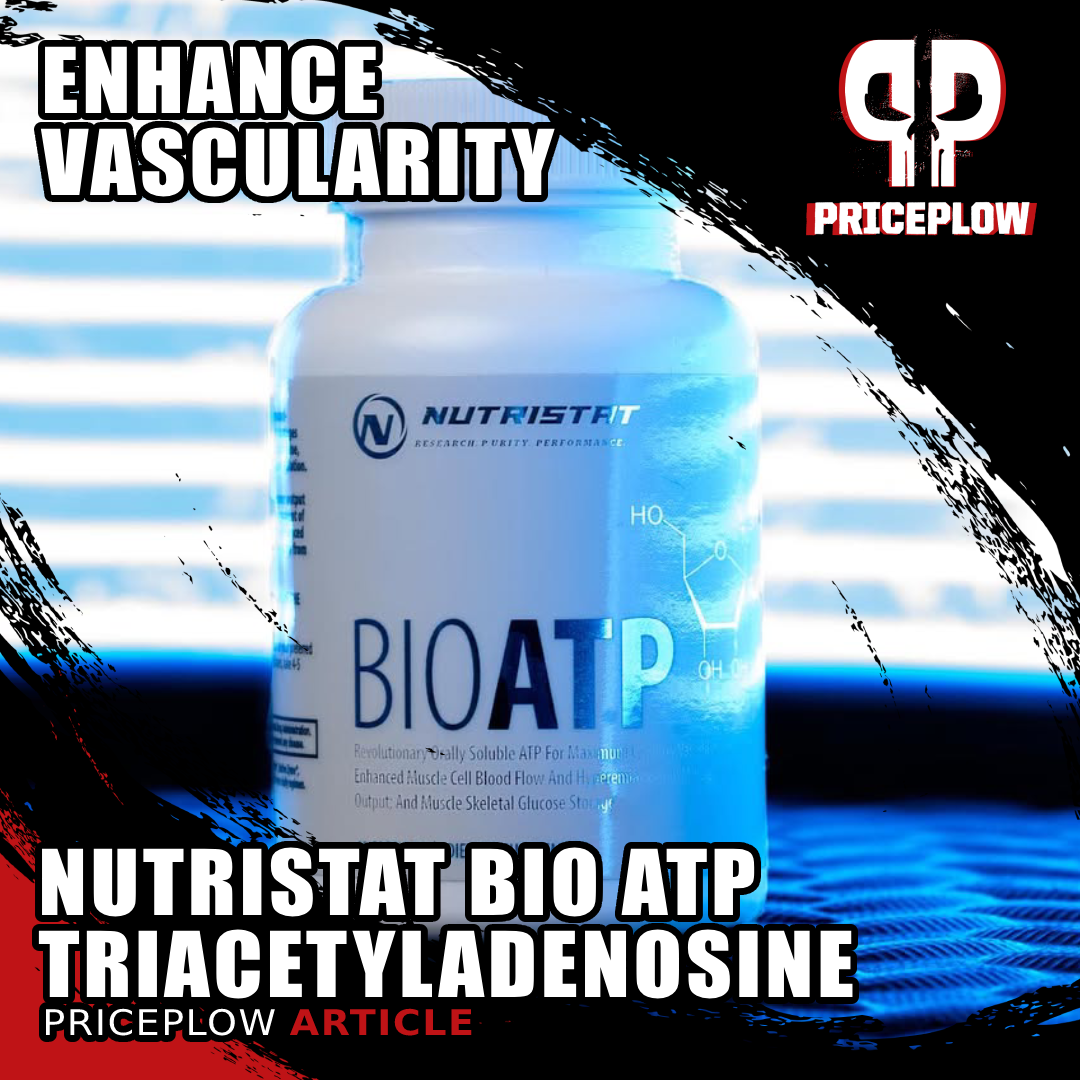
Nutristat introduces Bio ATP featuring triacetyladenosine (TAA), a novel adenosine form that enhances blood flow, promotes muscle fullness, and improves exercise performance. Not just another "ATP" supplement - this one works differently!
Most betaine research cited above uses 2.5 grams daily for durations ranging from two to fourteen weeks. This dose consistently demonstrates benefits across multiple outcomes.
-
The 2.5g Foundation
Six weeks of 2.5g daily betaine in experienced strength athletes significantly improved bench press training volume, arm cross-sectional area, lean body mass, and body composition while reducing fat mass compared to placebo.[6] Two weeks of 2.5g daily betaine in recreationally trained men improved vertical jump power, bench press throw power, and force production in isometric squats and bench press.[13] Fifteen days of 2.5g daily betaine improved squat repetitions to fatigue with 75% of one-rep max.[7]
The 2.5g dose clearly works. But there's significant individual variation in response. Some subjects in these studies showed dramatic improvements while others demonstrated minimal changes. This variation suggests that 2.5g might be the threshold for many individuals: enough to trigger adaptations, but not necessarily enough to maximize them across all responders.
-
Higher Dose Research
Studies examining doses above 2.5g reveal something interesting: effects scale with dose, at least within reasonable ranges.
Research examining 3 to 6 grams daily demonstrates dose-dependent homocysteine reduction. A single oral dose study found that 3g and 6g betaine produced acute, dose-dependent increases in serum betaine and reductions in plasma homocysteine within two hours.[2] Studies using 6g daily for six weeks in healthy volunteers consistently lower fasting homocysteine by 5% to 20%.[4]
While 6g exceeds practical pre-workout dosing, the twelve-week study using this dose demonstrated excellent safety: no adverse effects even at double the standard supplementation dose.[2] Human intervention studies show no adverse effects with 4g daily supplementation in healthy subjects, though doses above 3g may increase LDL cholesterol in overweight individuals with metabolic syndrome.[2]
The practical implication: 3g sits in the sweet spot, above the minimum effective dose where individual variation matters most, but well below doses that raise any safety concerns. It's not about pushing limits; it's about ensuring effectiveness across different metabolic phenotypes.
-
The “Training Responder” Phenomenon
Not all betaine studies show positive results. A systematic review of seven randomized controlled trials found that only two reported increases in strength or power following betaine supplementation, while five showed no changes.[12]
But dig into the details and a pattern emerges. Studies showing benefits shared common features: trained subjects, standardized exercise protocols between testing sessions, adequate supplementation duration. Studies showing null results typically used untrained subjects, lacked structured training protocols, or employed inadequate dosing strategies like splitting 2.5g into two 1.25g doses.[12]
This training-responder phenomenon actually strengthens the case for 3g dosing. If betaine's benefits require adequate training stimulus to manifest, then ensuring sufficient dosing becomes even more critical. You don't want inadequate supplementation to become the limiting factor when your training is dialed in.
Why 3g Makes Sense for Pre-Workouts
Pre-workout supplements target a specific use case: consumption 30-45 minutes before training to enhance that session's performance. This differs from daily supplementation studies where betaine accumulates over weeks.
-
Acute Workout Demands
Betaine absorption is rapid, with plasma concentrations peaking 40-60 minutes after oral ingestion.[4] This timeline aligns perfectly with pre-workout consumption. But here's the consideration: acute training creates immediate, intense metabolic stress that challenges cellular hydration, depletes methyl donors, and stresses energy systems simultaneously.[3]
The OG liquid glycerol muscle volumizer is still king. Nutristat's PUMP SCRIPT delivers 23g of pharmaceutical-grade glycerol - 7x more than powdered products - for maximum pumps and performance.
During that 60-90 minute training window, you're asking betaine to regulate osmotic stress across multiple sets, support rapid ATP regeneration, maintain protein stability, and provide methyl donors for ongoing metabolic reactions. The metabolic demand during intense exercise exceeds resting conditions by orders of magnitude. Providing 3g instead of 2.5g ensures sufficient substrate availability to meet this acute demand without relying on tissue stores that may already be depleted.
Think of it like fueling a car: you might maintain adequate gas for city driving with a half tank, but a road trip requires filling up. Training is your metabolic road trip.
-
Margin of Effectiveness
Individual variation in supplement response isn't just academic, it's the reality of human metabolism. Factors including body weight, baseline betaine status (influenced by diet), genetic polymorphisms in methylation enzymes, training status, and metabolic efficiency all influence how effectively someone responds to a given dose.
Research establishes 2.5g as effective for many individuals. But "many" isn't "all". Average dietary betaine intake ranges from 0.5 to 2 grams daily, with significant variation based on food choices.[1] Someone consuming minimal betaine from food may respond better to supplementation than someone already consuming 2g daily from wheat bran, spinach, and beets. The 2.5g dose that works for one athlete might be threshold or even suboptimal for another.
Including 3g provides a buffer above minimum: 20% more than the standard research dose. This margin ensures effectiveness across different metabolic phenotypes without venturing into doses that raise cost unnecessarily or create potential concerns. Combined with dietary intake, 3g puts most users in the 3.5-5g daily range, well within the demonstrated safety profile.[4]
For serious athletes, being slightly over the optimal dose matters far less than being under it. You can't make up for insufficient supplementation with effort.
Summing Up: The Betaine Decision
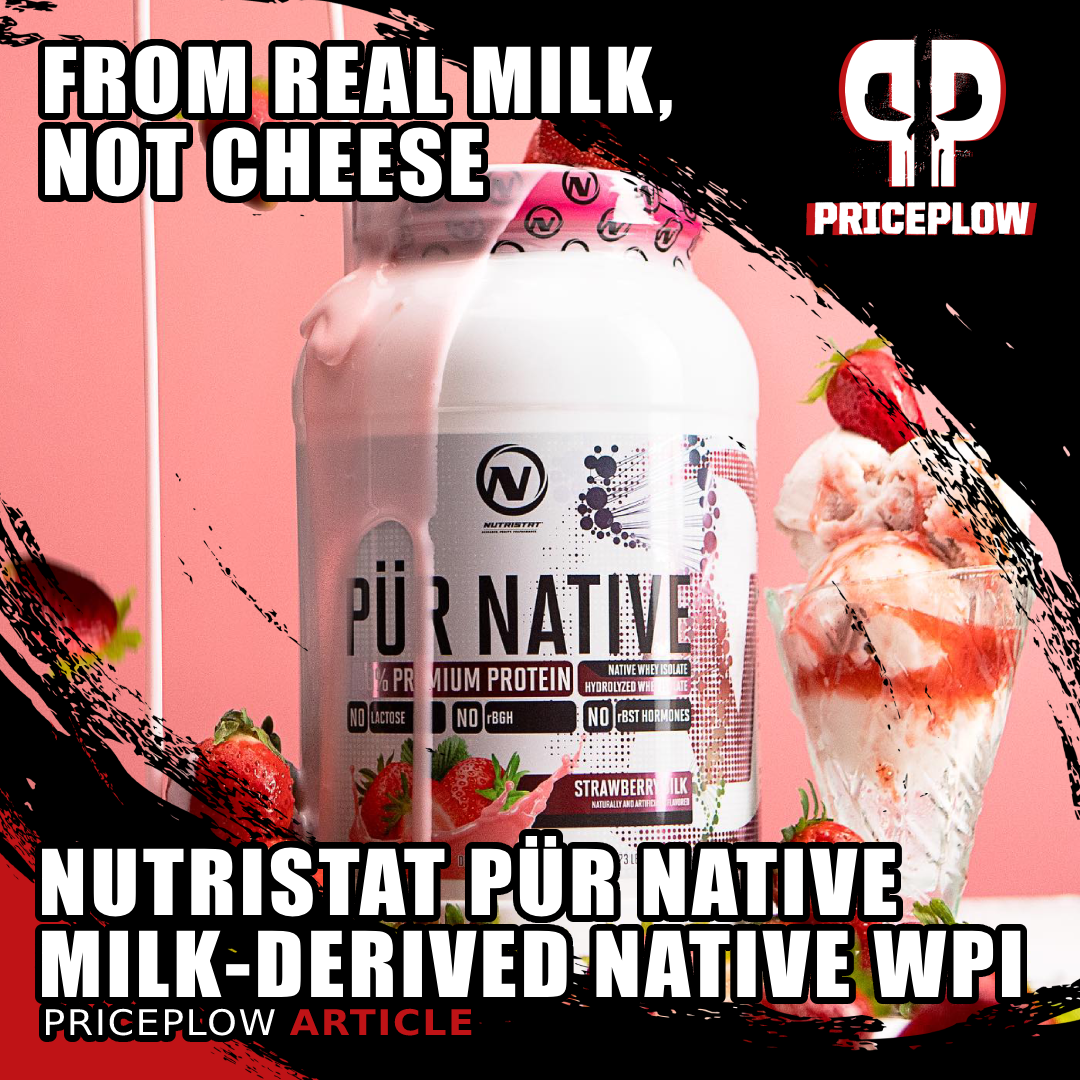
Nutristat PÜR NATIVE delivers Native Whey Protein extracted directly from milk, not cheese production. Lab-tested with 3.1g+ leucine per serving and enhanced with NativeZyme technology for superior absorption. Research shows faster recovery and better gains.
Betaine deserves its place in Pre Script because it works through mechanisms that matter: cellular hydration under stress and methyl donation for critical metabolic pathways. These dual functions make it more versatile than single-mechanism ingredients, supporting immediate performance, recovery, and long-term adaptation simultaneously.
The 3 gram dose is positioned above minimum effective dosing to account for individual variation, acute workout demands, and synergy with the 5g Creapure creatine monohydrate and other premium ingredients in the formula. When combined with 6g L-citrulline, 2.5g nitrates, and 300mg caffeine, the result is comprehensive performance enhancement addressing multiple training pathways.
For serious athletes following structured programs, a bit more betaine provides meaningful advantages over the 1-2.5g doses found in cost-optimized formulas.
The supplement industry is full of underdosed formulas and proprietary blends hiding inadequate ingredients. Pre Script does the opposite: transparent dosing, premium ingredients, and amounts that make sense for serious training.
The Nutristat Pattern: Excellence as Standard Operating Procedure
Browse Nutristat's product line and a consistent philosophy emerges: when research suggests more could be better, they don't settle for minimum effective doses just to hit marketing claims.
Look at their commitment to Creapure® creatine monohydrate. While competitors use generic creatine to boost margins, Nutristat exclusively uses German-engineered Creapure across their entire lineup, from standalone creatine to Crea Script to Pre Script. The 99.99% purity and pharmaceutical-grade manufacturing costs significantly more, but they refuse to compromise.
The same pattern appears with L-citrulline. Pre Script contains 6g of pure L-citrulline, not the citrulline malate (which provides only 50-60% actual citrulline). Those extra grams of active ingredient cost more per serving, but Nutristat prioritizes effectiveness over penny-pinching.
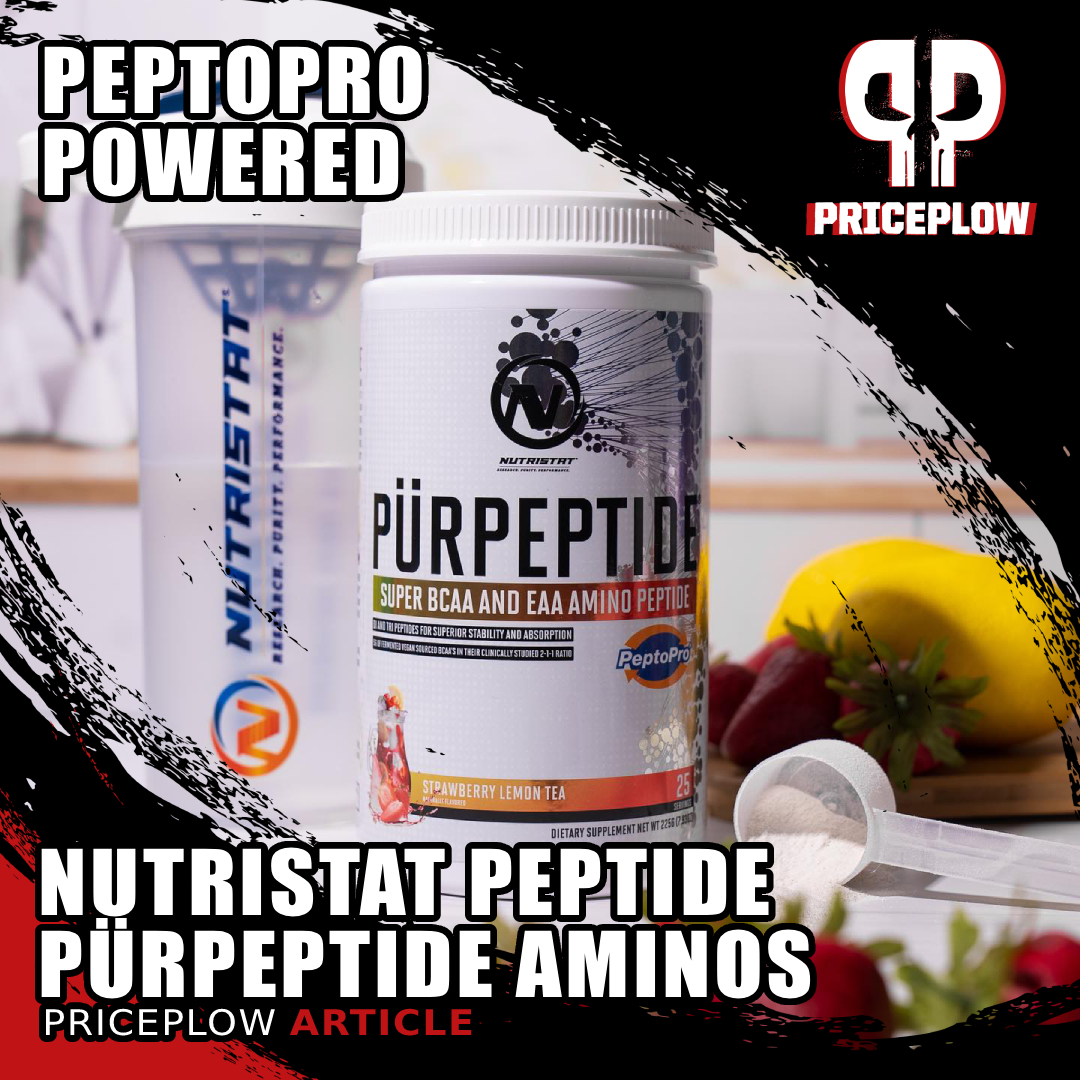
Nutristat PÜRPEPTIDE combines PeptoPro hydrolyzed casein with vegan BCAAs for rapid amino acid delivery during intense training. When your digestive system shuts down during hard workouts, these peptides absorb directly through specialized transporters.
Now we see it again with betaine: 3g instead of the 2.5g standard. It's a 20% increase in a premium ingredient that directly impacts the formula's cost structure. Most brands would stop at 2.5g and pocket the difference. Nutristat asks whether the extra 500mg makes sense for serious training, and the answer is yes.
This approach extends to breakthrough ingredients like BioATP® triacetyladenosine, where they're pioneering compounds competitors haven't discovered yet. It's evident in their PÜR NATIVE native whey protein, using cold-filtered native whey instead of cheese byproduct protein.
The pattern is clear: Nutristat formulates for results, not cost optimization. When you're paying slightly more per serving, you're paying for ingredients that work at doses that matter.
Practical Application: Betaine in Context
For those seeking maximum results, Pre Script stacks effectively with other Nutristat products. Combine it with PUMP SCRIPT for enhanced hydration and pumps, or follow training with PÜR NATIVE for superior recovery through native whey's enhanced leucine content.
This dosing benefits serious athletes who train with structure and intensity... those accumulating high training volumes, following periodized programs, and creating the metabolic demand where betaine's mechanisms operate most effectively. If you're pushing limits rather than going through motions, the 3g dose delivers a few advantages that 2.5g just might miss.
Conclusion: The Details That Define Excellence
Most supplement companies optimize formulas around spreadsheets, calculating the minimum ingredient amounts needed to support marketing claims while maximizing profit per container. Nutristat takes the opposite approach, asking what doses make sense for athletes who actually train hard and demand results.
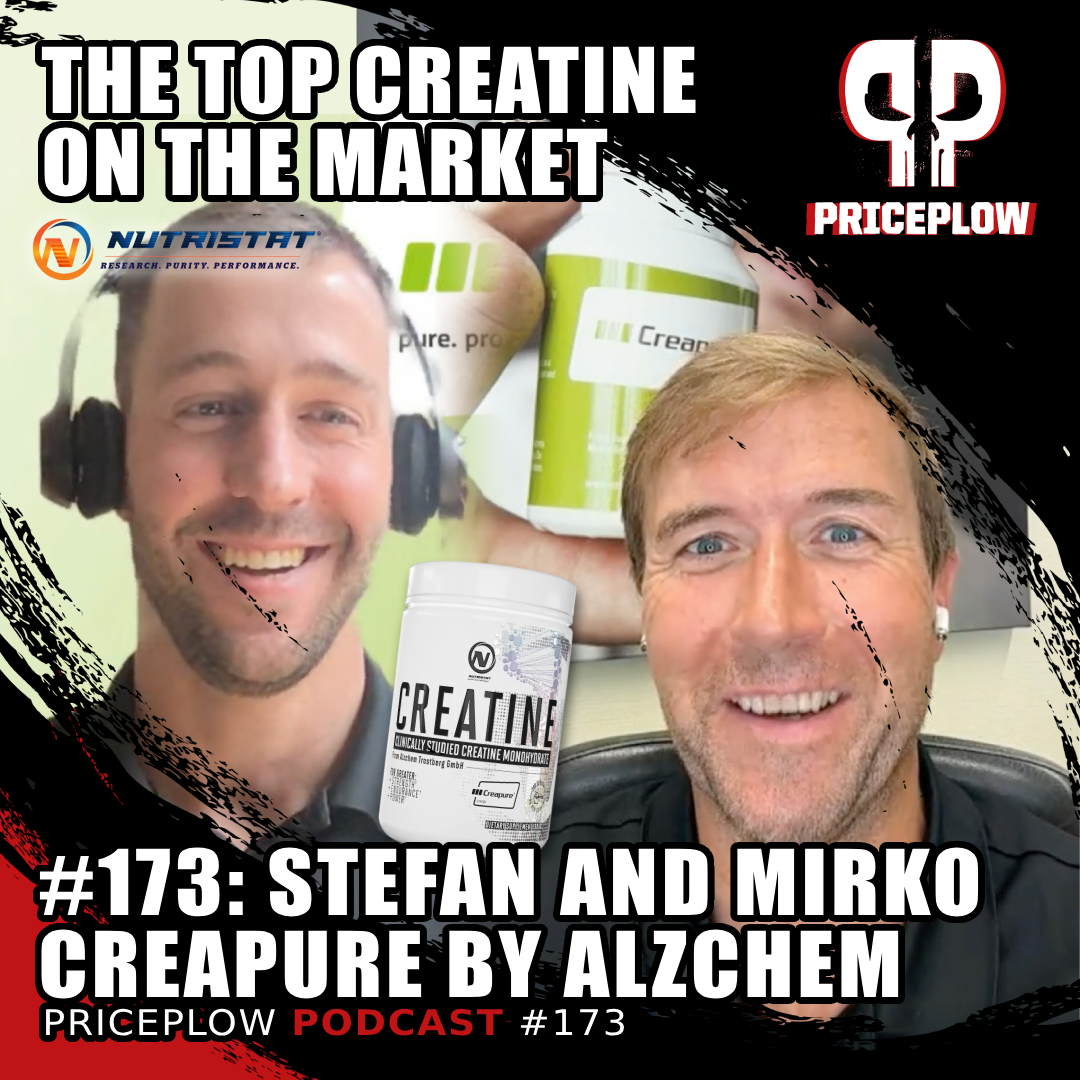
Mirko Holzmüller and Stefan Schweyer from Creapure reveal the manufacturing secrets behind Germany's 99.99% pure creatine monohydrate and explore creatine's expanding applications beyond sports performance on Episode #173 of the PricePlow Podcast.
The 3g betaine in Pre Script exemplifies this philosophy. It costs more to include an extra 500mg per serving across thousands of containers. But for serious athletes, being slightly over optimal dosing matters far less than being under it. You can't compensate for insufficient supplementation with effort or willpower.
This decision reflects Nutristat's broader commitment to ingredient quality and clinical effectiveness. From Creapure creatine to pure L-citrulline to BioATP triacetyladenosine, Pre Script is built on the premise that superior ingredients at research-supported doses deliver superior results.
For those tired of pre-workouts that prioritize profit margins over performance, Pre Script offers a different standard. Check our prices below and sign up for Nutristat news alerts to stay updated on this brand that consistently refuses to compromise:
Nutristat Pre-Script – Deals and Price Drop Alerts
Get Price Alerts
No spam, no scams.
Disclosure: PricePlow relies on pricing from stores with which we have a business relationship. We work hard to keep pricing current, but you may find a better offer.
Posts are sponsored in part by the retailers and/or brands listed on this page.

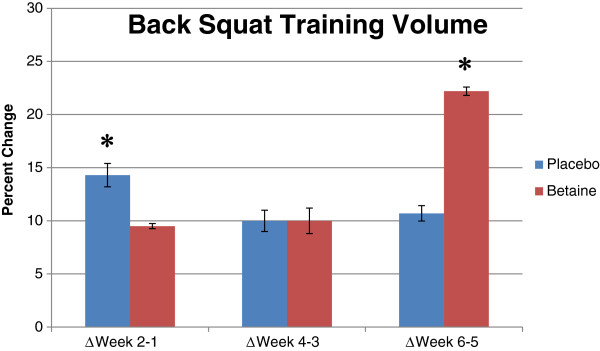
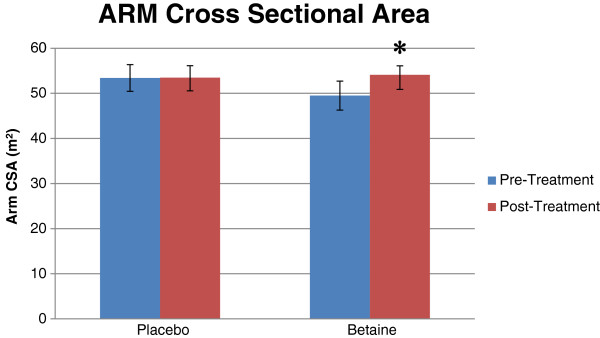

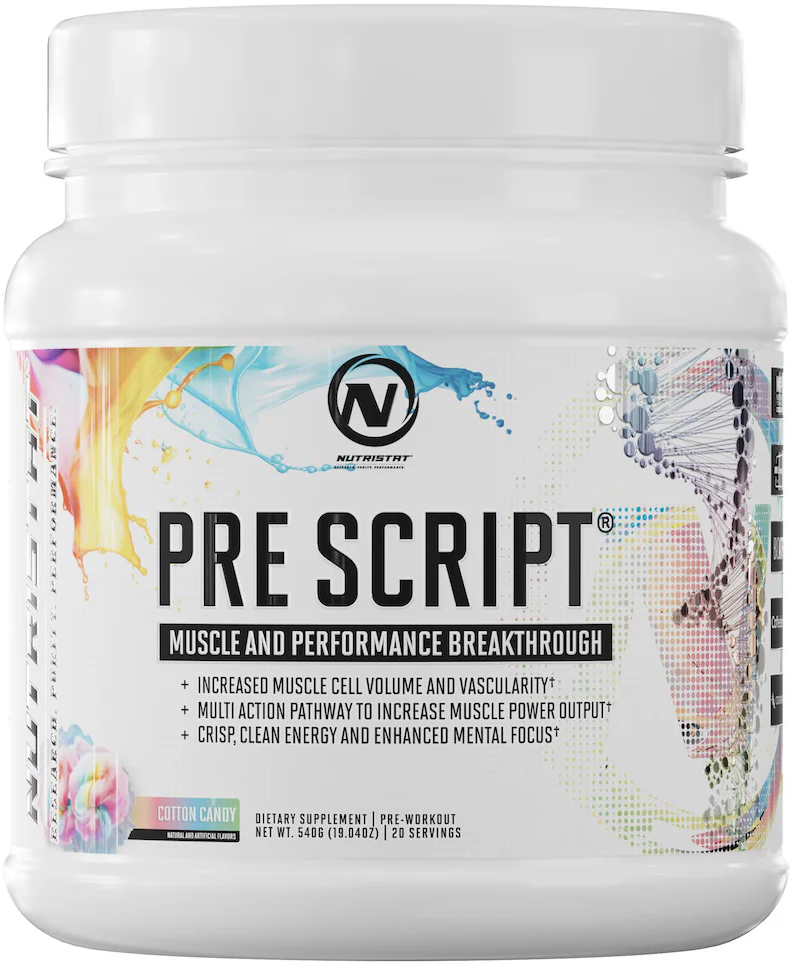
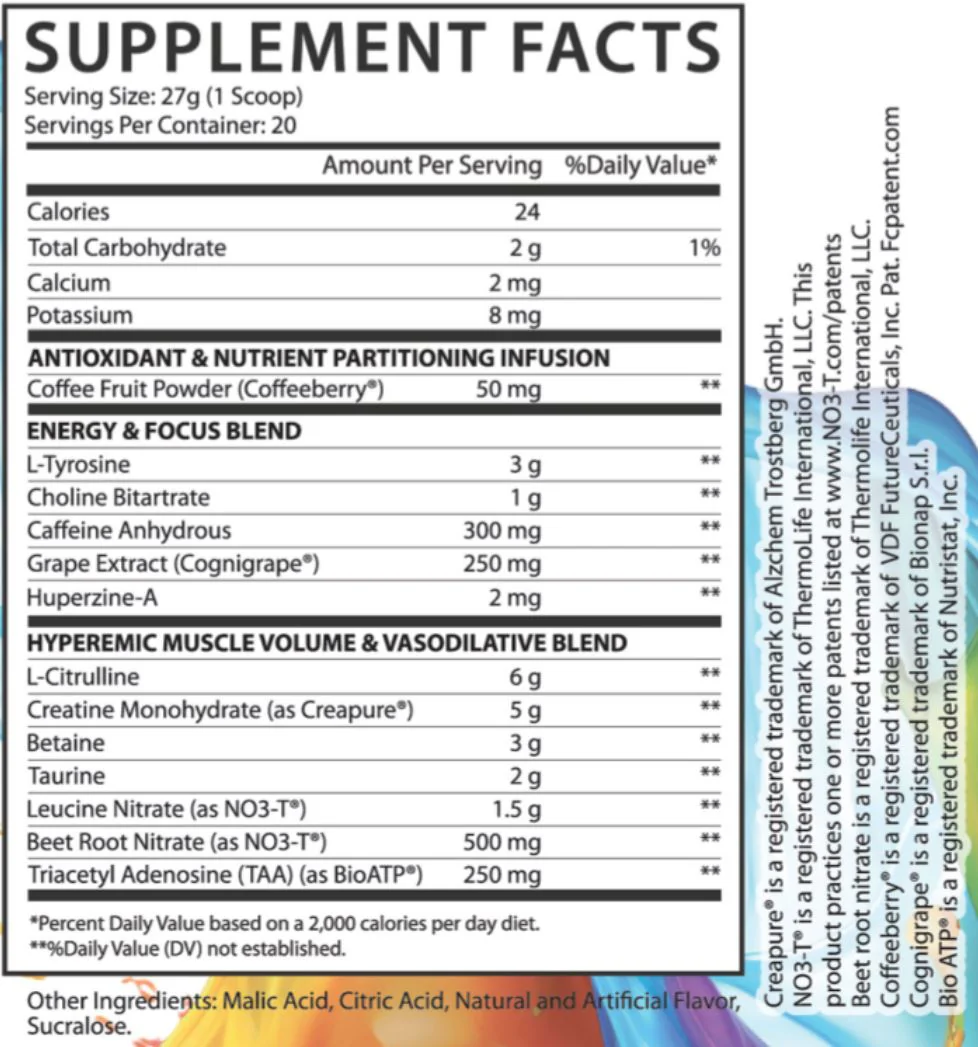
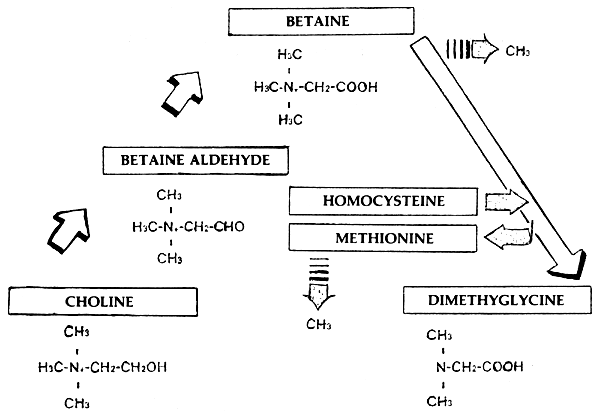


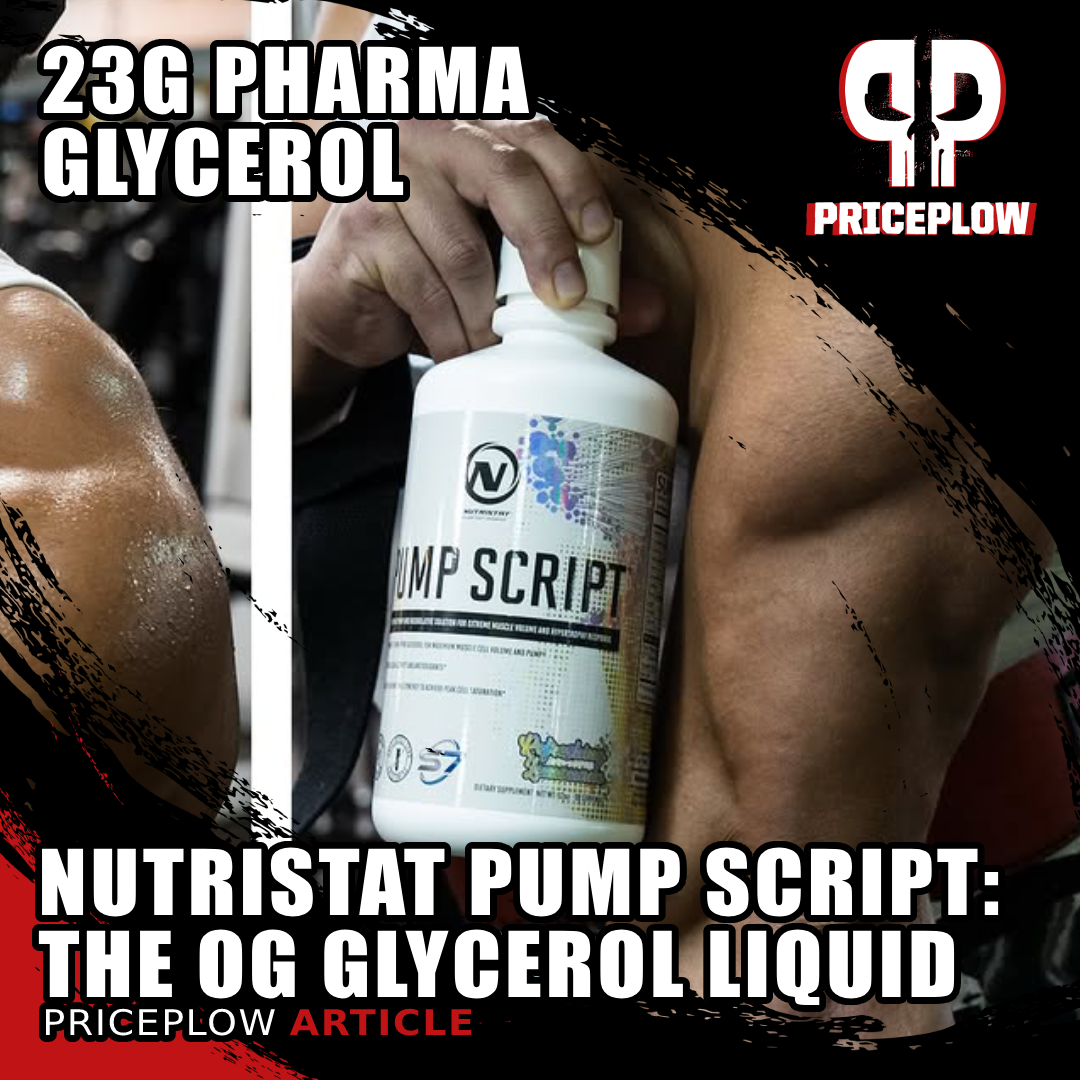


Comments and Discussion (Powered by the PricePlow Forum)